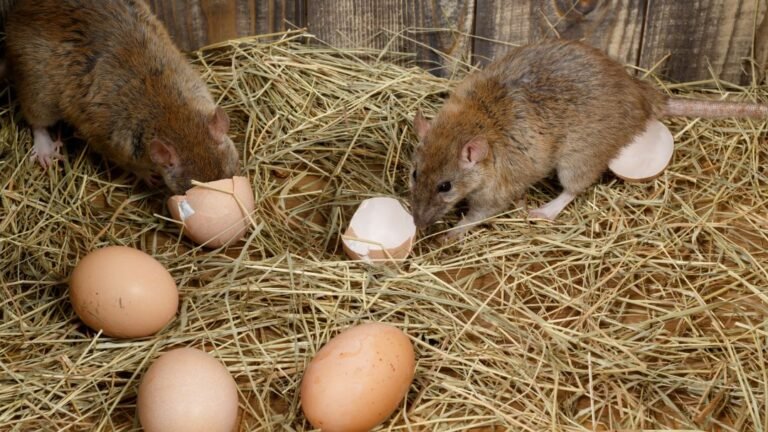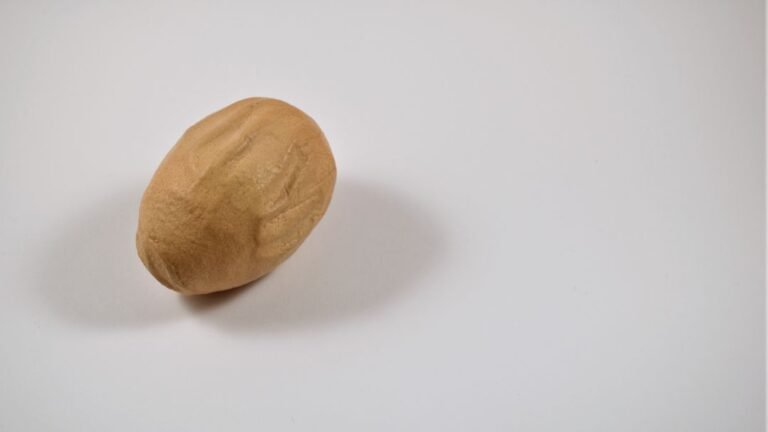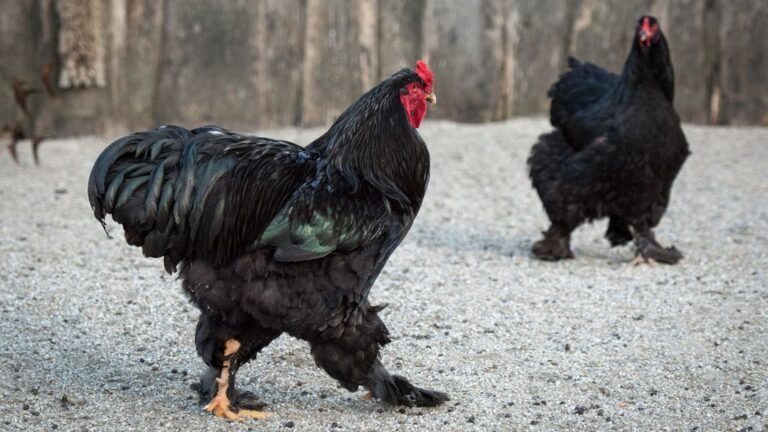Water belly, also known as ascites, is a condition in chickens characterized by fluid accumulation in the abdominal cavity. This article will discuss the symptoms and treatment options for this condition to help you identify and address the issue in your flock.
Water belly, or ascites, is a common problem in chickens where fluid accumulates in the abdomen. This condition can be detrimental to the bird’s health and requires immediate attention. Identifying the symptoms of water belly early on is crucial for effective treatment.
Knowing how to address this condition can help you provide the necessary care and support to your chickens. We will explore the various signs of water belly in chickens and discuss recommended treatment options to alleviate the issue. By understanding the symptoms and treatments, you can take proactive steps to maintain your flock’s health and well-being.
Understanding Water Belly In Chickens
Understanding Water Belly in ChickensWater belly, also known as ascites, is a condition that can affect chickens and cause discomfort and poor health. It occurs when there is an abnormal accumulation of fluid in the abdominal cavity of the bird. This can lead to swelling and distension of the belly, giving it a water-filled appearance. In this article, we will delve into what water belly is, how it occurs in chickens, and the symptoms to look out for. We will also discuss the treatments available for this condition.H3: What is water belly?Water belly, or ascites, is a condition that affects the abdominal cavity of chickens. It is characterized by the abnormal accumulation of fluid, usually serum or blood, in the peritoneal cavity. The peritoneal cavity is located in the abdomen and houses various organs such as the liver, intestines, and reproductive organs. The excessive fluid accumulation causes the belly to become distended and swollen, resembling a water-filled balloon. This condition can be painful for chickens and typically indicates an underlying health issue.H3: How does water belly occur in chickens?There are several factors that can contribute to the development of water belly in chickens. One of the primary causes is heart or circulatory problems. When the heart is unable to pump blood efficiently, it leads to congestion in the liver and other organs, causing fluid to accumulate in the abdominal cavity. Another common cause is liver damage or disease. When the liver is impaired, it fails to produce albumin, a protein responsible for maintaining the balance of fluids in the body. Consequently, fluid accumulates in the abdomen, leading to water belly. Additionally, genetic factors, high-altitude environments, and respiratory issues can also contribute to the development of this condition.H3: Identifying the symptoms of water bellyIdentifying the symptoms of water belly in chickens is crucial for prompt diagnosis and treatment. Here are some signs to look out for:1. Abdominal distension: One of the key symptoms of water belly is a visibly distended abdomen. The belly may appear swollen and feel tense to the touch. This is due to the accumulation of fluid in the abdominal cavity.2. Difficulty breathing: Chickens with water belly often experience respiratory distress. This can manifest as labored breathing, panting, or open-mouthed breathing. The build-up of fluid in the abdomen puts pressure on the lungs, making it harder for the bird to breathe.3. Reduced activity and appetite: Chickens suffering from water belly may exhibit lethargy and decreased activity. They may also show a loss of appetite and reduced interest in food and water.4. Pale comb and wattles: A chicken’s comb and wattles may appear pale or bluish in color due to reduced oxygenation as a result of compromised circulation.5. Poor growth and weight gain: Water belly can negatively impact a chicken’s growth and weight gain. Affected birds may have stunted growth and fail to thrive, leading to reduced productivity.If you notice any of these symptoms in your chickens, it is essential to seek veterinary care as soon as possible to properly diagnose and treat water belly.Factors Contributing To Water Belly In Chickens
Water belly, also known as ascites, is a condition that affects chickens and can be caused by various factors. By understanding these contributing factors, you can take preventive measures to ensure the health and well-being of your flock. Here are some important factors that can lead to water belly in chickens:
Diet And Nutrition
The diet and nutrition of chickens play a crucial role in their overall health. Poor diet, especially one that is high in carbohydrates and low in essential nutrients, can have negative consequences on poultry health. Feeding chickens excessive amounts of grains, especially corn, can contribute to obesity and lead to the development of water belly.
Breeding Methods
Breeding methods have a significant impact on the genetic traits of chickens. Breeders often select for specific traits, such as rapid growth or increased meat production, which can affect the overall health of the bird. Breeding for fast growth can result in chickens with weakened cardiovascular systems, making them more susceptible to ascites.
Housing Conditions
The housing conditions in which chickens are kept can also influence the occurrence of water belly. Overcrowded or poorly ventilated coops can lead to increased levels of ammonia and carbon dioxide, which can negatively affect the respiratory system of the birds. This, in turn, can contribute to the development of ascites.
In addition, extreme temperatures, whether too hot or too cold, can put stress on the birds and compromise their overall health. Therefore, it is essential to provide adequate space, proper ventilation, and maintain optimal temperature conditions in the chicken coop.
Genetic Predisposition
Some chicken breeds or individual birds may have a genetic predisposition to develop water belly. Certain genetic traits can make them more susceptible to cardiovascular problems, leading to the accumulation of fluid in the abdominal cavity. It is important to consider the breed and select birds with a lower risk of developing ascites when building your flock.
By being aware of the factors that contribute to water belly in chickens, you can make informed decisions in managing their diet, breeding, housing, and genetics. This will help reduce the likelihood of ascites and prioritize the well-being of your poultry.
Diagnosing Water Belly In Chickens
Water belly, also known as ascites, is a condition that can affect chickens of all ages and breeds. It occurs when fluid accumulates in the abdominal cavity, leading to a swollen belly. Identifying and diagnosing water belly in chickens is important for timely treatment and management of this condition. In this section, we will explore the different ways in which water belly in chickens can be diagnosed.
Physical Examination
A physical examination is often the first step in diagnosing water belly in chickens. During this examination, the veterinarian will carefully inspect the chicken’s physical appearance and behavior. They will look for specific symptoms and signs that may indicate the presence of water belly.
Important signs that veterinarians look for during a physical examination include:
- Abdominal swelling: The veterinarian will palpate the chicken’s abdomen to check for any abnormal swelling.
- Labored breathing: Ascites can put pressure on the chicken’s respiratory system, causing difficulty in breathing.
- Pale comb and wattles: Chickens with water belly often exhibit pale or bluish-colored combs and wattles due to reduced oxygen supply.
- Lethargy: Affected chickens may become less active and display signs of overall weakness and reduced appetite.
Lab Tests And Diagnostics
In addition to a physical examination, veterinarians may order various lab tests and diagnostics to confirm the presence of water belly in chickens. These tests can help determine the underlying cause of ascites, which may vary from heart disease to liver problems.
Common lab tests and diagnostics for diagnosing water belly in chickens may include:
- Blood tests: Analyzing the chicken’s blood can provide valuable information about liver and kidney function, electrolyte levels, and potential infections.
- Radiographs (X-rays): X-rays can reveal abnormalities in the chicken’s internal organs, helping the veterinarian identify the presence of fluid in the abdominal cavity.
- Ultrasound: An ultrasound examination allows visualization of the chicken’s organs and the accumulation of fluid in the abdomen.
Differential Diagnosis
While a physical examination and lab tests can provide valuable information, it is also vital to consider other conditions that may present similar symptoms to water belly. Differential diagnosis involves ruling out other possible causes of abdominal swelling and related symptoms.
Conditions that may need to be considered as part of the differential diagnosis for water belly in chickens include:
| Possible Causes | Key Differentiating Factors |
|---|---|
| Heart disease | May present with abnormal heart sounds and fluid accumulation in other body cavities. |
| Peritonitis | Usually caused by bacterial infection and may present with additional signs of sickness. |
| Tumors | Can cause abdominal swelling and may be detected through imaging tests. |
Through careful consideration of physical examination findings, lab tests, and differential diagnosis, veterinarians can accurately diagnose water belly in chickens. Early diagnosis and targeted treatment can significantly improve the chicken’s quality of life and overall well-being.
Effective Ascites Treatment For Water Belly In Chickens
When it comes to the health of your chickens, water belly, also known as Ascites, can be a serious condition that requires immediate attention. Ascites is a condition in which the abdomen of a chicken becomes filled with excess fluid, placing pressure on vital organs and causing discomfort to the bird. If left untreated, it can lead to severe respiratory distress and even death. That’s why it’s crucial to understand the effective treatments available for water belly in chickens. In this article, we will explore the various options for Ascites treatment, including dietary modifications, medications and supplements, veterinary interventions, and surgical options.
Dietary Modifications
One of the first steps in treating water belly in chickens involves making necessary changes to their diet. By adjusting their feeding regimen, you can help alleviate the symptoms and prevent further complications. Here are some dietary modifications that can be effective:
- Reducing sodium intake: Since excessive sodium can contribute to fluid retention, it is advisable to limit the amount of salt present in the chicken’s diet. Avoid high-sodium feeds and instead opt for low-sodium alternatives.
- Incorporating diuretic foods: Diuretic foods can help increase urine output and reduce fluid accumulation. Some natural diuretics suitable for chickens include celery, parsley, watermelon, and cucumber. You can add these ingredients to their diet as treats or mix them into their regular feed.
- Providing adequate protein: A balanced diet rich in high-quality protein can help maintain the overall health of your chickens. Make sure their feed contains enough protein from sources like fish meal, soybean meal, or insects.
Medications And Supplements
Aside from dietary modifications, various medications and supplements can aid in treating water belly in chickens. These options can help manage the underlying causes of Ascites and alleviate symptoms. Here are some commonly used medications and supplements:
- Diuretic medications: Diuretic medications can assist in increasing urine production and reducing the accumulation of fluid in the abdomen. It is essential to consult a veterinarian before administering any medication to ensure proper dosage and safety.
- Herbal remedies: Certain herbs like dandelion root, nettle, and astragalus have diuretic and anti-inflammatory properties that can benefit chickens with water belly. These herbs can be offered in the form of teas or incorporated into their feed as supplements.
- Vitamin E and selenium: Supplementing your chickens’ diet with vitamin E and selenium can help combat oxidative stress and improve heart function, which are important factors in Ascites treatment. Consult a veterinarian for appropriate dosage recommendations.
Veterinary Interventions
When dietary modifications and supplements are not sufficient, seeking veterinary interventions is necessary to provide the best care for your chickens. Veterinarians may recommend the following:
- Diagnostic tests: Veterinary professionals may conduct blood tests, radiographs, or ultrasounds to determine the underlying cause of the Ascites.
- Prescription medications: In some cases, veterinarians might prescribe specific medications to address the underlying condition causing water belly in chickens.
- Fluid drainage: As a temporary solution, veterinarians may drain the excess fluid from the abdomen to provide immediate relief; however, this is not a long-term solution.
Surgical Options
In severe cases of water belly in chickens, surgical intervention may be the best course of action. Surgical options can help address the underlying conditions causing Ascites and alleviate the fluid buildup effectively. These options might include:
- Pericardiectomy: This procedure involves removing a section of the affected chicken’s pericardium, the sac surrounding the heart. By doing so, it can relieve pressure on the heart and reduce fluid accumulation in the abdomen.
- Liver lobe resection: Removing a portion of the liver can improve its function and reduce the occurrence of Ascites.
Remember, it is crucial to consult a veterinarian before pursuing any surgical option, as these procedures carry inherent risks and should only be performed by experienced professionals.
Preventing Water Belly In Chickens
Water belly, also known as ascites, is a common health condition in chickens that requires prompt attention. It is characterized by an excessive accumulation of fluid in the abdominal cavity, leading to swollen bellies and potential discomfort for the birds. While the condition can be challenging to manage once it occurs, prevention is always better than cure. In this section, we will discuss effective preventive measures to minimize the risk of water belly in your flock.
H3 Id=”proper-nutrition-and-feeding-practices”proper Nutrition And Feeding Practices/h3
When it comes to preventing water belly in chickens, providing the right nutrition and adopting appropriate feeding practices is key. A well-balanced diet rich in essential nutrients will help maintain optimal health and reduce the likelihood of ascites. Consider the following:
- Ensure your chickens receive a feed specifically formulated for their age, breed, and purpose (e.g., layer feed, broiler feed).
- Avoid feeding excessive amounts of high-energy feeds, such as corn or soy, as they can contribute to weight gain and strain on the cardiovascular system.
- Include a sufficient amount of dietary fiber and essential vitamins and minerals to support overall digestive health.
- Monitor and limit the intake of sodium (salt) in the diet, as excess sodium can lead to fluid retention.
- Provide unrestricted access to clean, fresh water at all times to ensure proper hydration.
H3 Id=”managing-breeding-and-genetics”managing Breeding And Genetics/h3
In addition to proper nutrition, managing breeding and genetics can significantly contribute to preventing water belly in chickens. By prioritizing the following considerations, you can reduce the risk of developing ascites:
- Select breeding stock with optimal health and genetic vigor to minimize the chances of passing on genetic predispositions to water belly.
- Avoid breeding chickens that have previously shown signs of ascites susceptibility.
- Implement appropriate breeding techniques, such as crossbreeding, to diversify the genetic pool and enhance resilience.
- Regularly assess the overall health and growth rates of your flock, culling individuals that exhibit poor growth or signs of susceptibility to ascites.
H3 Id=”improving-housing-conditions”improving Housing Conditions/h3
The housing conditions in which your chickens are kept play a crucial role in preventing water belly. By focusing on the following aspects of their environment, you can create a safer and healthier space for your flock:
- Provide adequate ventilation in the chicken coop or house to ensure good air quality and minimize the build-up of harmful gases, which can put additional strain on the birds’ respiratory and cardiovascular systems.
- Maintain appropriate temperature and humidity levels within the housing structure, as extreme variations can increase stress and contribute to the development of ascites.
- Ensure sufficient space per bird to minimize overcrowding and allow for free movement, which can reduce stress and improve overall well-being.
- Keep the living area clean and dry, regularly removing droppings and providing dry bedding to prevent the growth of harmful bacteria.
H3 Id=”regular-veterinary-check-ups-and-monitoring”regular Veterinary Check-ups And Monitoring/h3
Regular veterinary check-ups and monitoring allow for early detection and intervention in case of any potential health issues, including ascites. By incorporating these practices, you can ensure the well-being of your flock:
- Partner with a reputable and experienced poultry veterinarian who can provide guidance on disease prevention and overall flock health management.
- Schedule routine check-ups and screenings to assess the overall health of your chickens, as well as identify any potential risk factors for ascites.
- Monitor your flock for any changes in behavior, appetite, breathing, or abdominal distention, and seek veterinary assistance if you notice any concerning signs.
- Stay up-to-date with relevant research and stay informed about advancements in poultry health to make informed decisions regarding your flock’s preventive care.
Conclusion
Water belly, or ascites, in chickens can be a serious condition that requires prompt attention and proper treatment. By understanding the symptoms, such as swollen abdomen and difficulty breathing, poultry owners can take necessary steps to alleviate the discomfort and support their birds’ health.
Treatment options may include dietary adjustments, medication, and veterinary intervention. Remember, early detection is key to a successful outcome. Stay vigilant and proactive in ensuring the well-being of your chickens.



